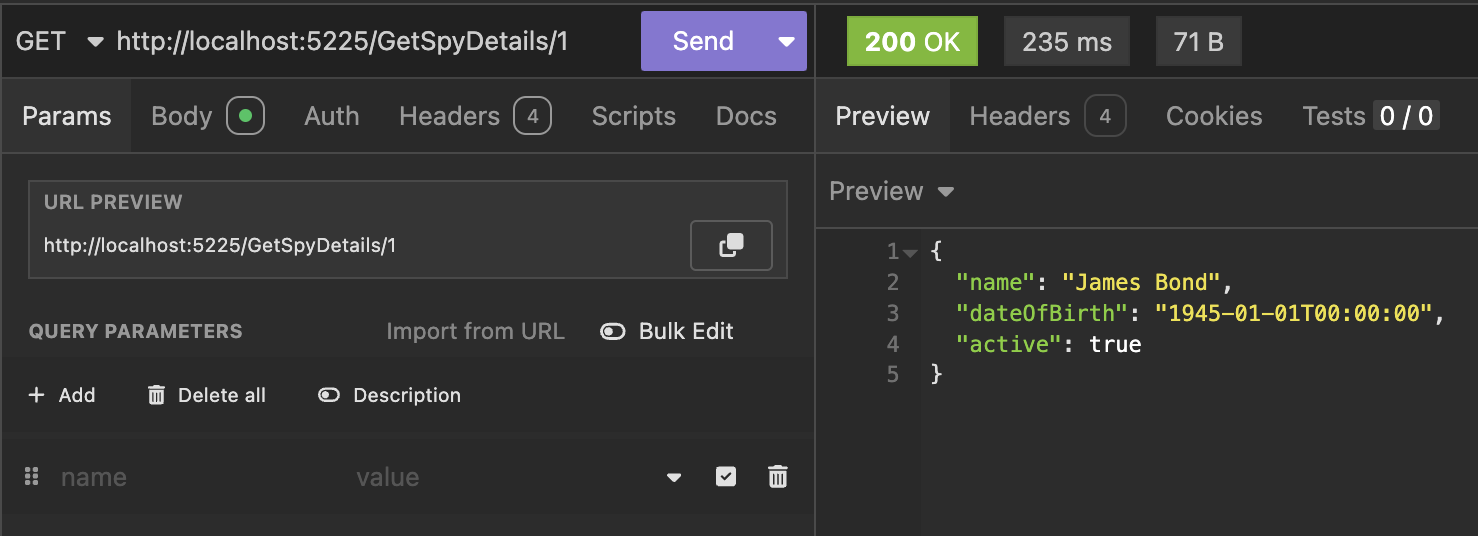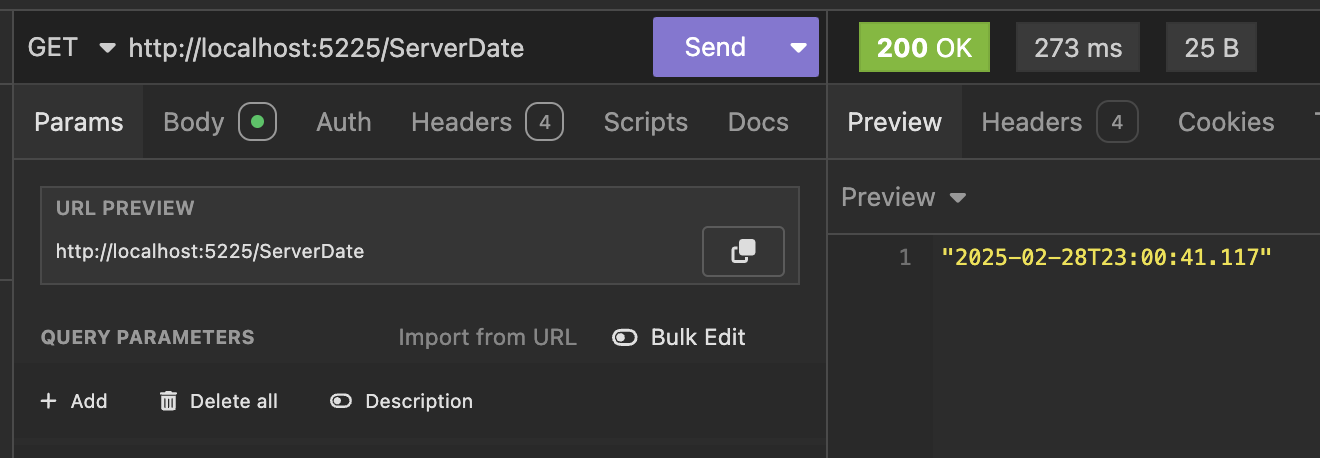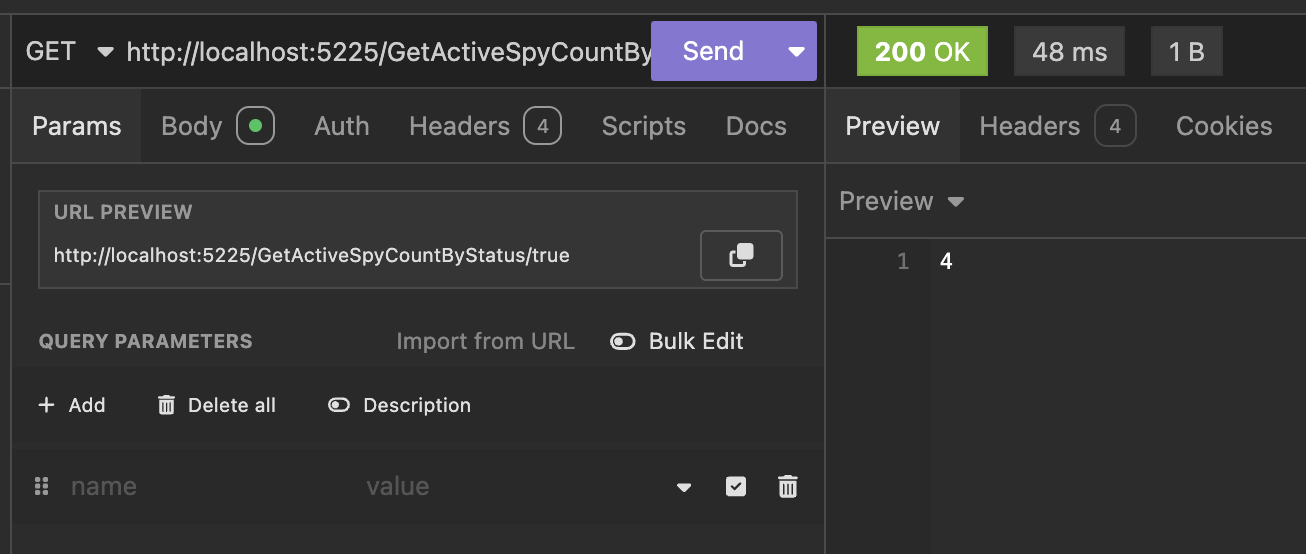Dapper Part 4 - Passing Data To And From The Database
[C#, .NET, Dapper, Database]
This is Part 4 of a series on using Dapper to simplify data access with ADO.NET
- Simpler .NET Data Access With Dapper - Part 1
- Dapper Part 2 - Querying The Database
- Dapper Part 3 - Executing Queries
- Dapper Part 4 - Passing Data To And From The Database (This Post)
- Dapper Part 5 - Passing Data In Bulk To The Database
- Dapper Part 6 - Returning Multiple Sets Of Results
- Dapper Part 7 - Adding DateOnly & TimeOnly Support
- Dapper Part 8 - Controlling Database Timeouts
- Dapper Part 9 - Using Dynamic Types
- Dapper Part 10 - Handling Cancellations
- Dapper Part 11 - Using Inheritance
- Dapper Part 12 - Alternative Bulk Insert Technique
- Dapper Part 13 - Using Transactions
- Dapper Part 14 - Multithreading
- Dapper Part 15 - Using The IN Clause
- Dapper Part 16 - Consideration When Passing Parameters
In our last post, we looked at how to execute ad-hoc queries and stored procedures on the server.
In this post, we will look at various ways to pass data between server and client.
1. Input Parameters
We have already used this extensively over the last few posts, and it is by far the most common way to pass data between client and server.
Take the following endpoint:
app.MapGet("/ActiveList", (SqlConnection cn, ILogger<Program> logger) =>
{
const string query = """
SELECT
Spies.SpyID ID,
Spies.Name FullNames,
Spies.DateOfBirth BirthDate
FROM
dbo.Spies WHERE Active = @Active;
""";
var param = new DynamicParameters();
param.Add("Active", true);
var spies = cn.Query<V2.Spy>(query, param).AsList();
return Results.Ok(spies);
});
Active here is an input parameter.
You can specify a lot about your input parameter, as the example below indicates:
app.MapPost("/Login", (SqliteConnection cn, ILogger<Program> logger, LoginRequest request) =>
{
var param = new DynamicParameters();
// Create the Username parameter, specifying all the details
param.Add("Username", request.Username, DbType.String, ParameterDirection.Input, 100);
// Crete the password parameter
param.Add("Password", request.Password);
// Set the command query text
var query = "SELECT 1 FROM USERS WHERE Username=@Username AND Password=@Password";
// Execute the query
var status = cn.QuerySingleOrDefault<int>(query, param);
// Check the returned number
if (status == 1)
{
// We are now logged in
logger.LogInformation("User logged in successfully");
return Results.Ok();
}
logger.LogError("Login Failed");
// Return a 401
return Results.Unauthorized();
});
The Username here has all its parameters explicitly set.
You generally do not need to do this - the name and the value are usually enough. The database engine will figure out the rest.
2. Output Parameters
Some databases, in addition to input parameters, also support output parameters. This is commonly used in conjunction with store procedures.
When writing the stored procedure, you specify that it has output parameters. When the procedure is executed, the database engine will populate these parameters with values, which you can then read.
Take this example:
CREATE OR ALTER PROC [Spies.GetInfo]
@SpyID INT,
@Name NVARCHAR(100) OUTPUT,
@DateOfBirth DATE OUTPUT,
@Active BIT OUTPUT
AS
SELECT
@Name = Spies.Name,
@DateOfBirth = Spies.DateOfBirth,
@Active = Spies.Active
FROM
dbo.Spies
WHERE
Spies.SpyID = @SpyID;
We can obtain the parameter values as follows:
app.MapGet("/GetSpyDetails/{id:int}", async (SqlConnection cn, ILogger<Program> logger, int id) =>
{
var param = new DynamicParameters();
// Add the input parameter - the ID
param.Add("SpyID", id);
// Add the output parameters
param.Add("Name", dbType: DbType.String, size: 100, direction: ParameterDirection.Output);
param.Add("DateOfBirth", dbType: DbType.DateTime, direction: ParameterDirection.Output);
param.Add("Active", dbType: DbType.Boolean, direction: ParameterDirection.Output);
// Execute the query
await cn.ExecuteAsync("[Spies.GetInfo]", param);
// Fetch the populated values
var name = param.Get<string>("Name");
var dateOfBirth = param.Get<DateTime>("DateOfBirth");
var active = param.Get<bool>("Active");
// Output as an anonymous type
return new { Name = name, DateOfBirth = dateOfBirth, Active = active };
})
If we run this, we see the following:

This is just an example, and I would not recommend doing things this way.
Creating a Person type and then using QuerySingle<Person> to retrieve the information you want is simpler.
But output parameters have their use in this scenario: when inserting a row into a database, you want to return the generated primary key to the caller.
3. Functions
Another common scenario is you want to execute a function on the server and return a result to the client.
Take this built-in SQL server function that returns the system time:
GETDATE()
We can execute this function and return its result as follows:
app.MapGet("/ServerDate", async (SqlConnection cn, ILogger<Program> logger) =>
{
// Execute the function
var result = await cn.QuerySingleAsync<DateTime>("SELECT GETDATE()");
return result;
});
This returns the following:

The same technique works for your custom function, which has parameters. Here, we have one that takes a boolean parameter and counts the active Spy entities with that status.
CREATE OR ALTER FUNCTION [Spies.GetActiveCountByStatus]
(
@Status BIT
)
RETURNS INT
AS
BEGIN
DECLARE @Count AS INT;
SELECT
@Count = Count(1)
FROM
dbo.Spies
WHERE
Spies.Active = @Status;
RETURN @Count;
END;
The end-point that invokes this function is as follows:
app.MapGet("/GetActiveSpyCountByStatus/{status:bool}", async (SqlConnection cn, ILogger<Program> logger, bool status) =>
{
// Set up the parameters
var param = new DynamicParameters();
param.Add("Status", status);
// Execute the function
var result = await cn.QuerySingleAsync<int>("SELECT dbo.[Spies.GetActiveCountByStatus](@Status)", param);
return result;
});
Note how to invoke the function:
SELECT dbo.[Spies.GetActiveCountByStatus](@Status)
- You must populate the
DynamicParameterswith the expected parameter names and values. - You must have the
SELECT - You must also have the
dbo. - You must pass the parameters in brackets, with the
@prefix
If you run this, you get the following:

TLDR
You can pass data between the SQL server and the client using input parameters, output parameters, and functions.
In our next post, we will look at how to pass table-valued parameters to the database engine using Dapper.
The code is in my GitHub.
Happy hacking!